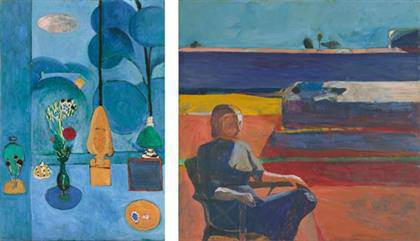
Doug Wheeler: PSAD Synthetic Desert III, 1971. March 24 – August 2017 at Guggenheim Museum
Doug Wheeler’s Synthetic Desert at Guggenheim The Solomon R. Guggenheim Museum presents the first-ever realized work from a group of installations conceived by Doug Wheeler during the late 1960s and ’70s: Doug Wheeler: PSAD Synthetic Desert III, 1971, on view March 24 to August 2017.]]>
Source: Solomon R. Guggenheim Museum
Produced in close collaboration with the artist, the Guggenheim installation is developed from drawings executed in 1971 and will be on view in the museum’s Tower Level 7. In addition to the architectural modification of existing rooms to achieve a sensate impression of infinite space, which is characteristic of Wheeler’s work of the period, “PSAD Synthetic Desert III” incorporates an acoustic element: the work is a “semi-anechoic chamber” designed to suppress all but the lowest levels of ambient sound. The artist’s concept of Synthetic Desert is partly drawn from psychological and neurophysiological experiments in sensory deprivation that date back to the mid-20th century. Wheeler also compares the impact of the work to his own experience of the Desert Southwest, where near-silent conditions profoundly influence the visual sensation of space.
”Doug Wheeler: PSAD Synthetic Desert III” is organized by Jeffrey Weiss, Senior Curator, and Francesca Esmay, Conservator, Panza Collection, with Melanie Taylor, Director, Exhibition Design, Solomon R. Guggenheim Museum. To realize the artwork, the museum is working closely with Raj Patel and Joseph Digerness of Arup, a design firm that specializes in the acoustic properties of built space. The presentation is executed in conjunction with the Guggenheim’s Panza Collection Initiative, an ongoing study devoted to questions around fabrication and installation of Minimal, Post-Minimal, and Conceptual art.
Wheeler is most closely associated with the “Light and Space” movement of West Coast art. Since he abandoned painting in the mid-1960s, much of his work has been based on the optical dematerialization of the space of a gallery or museum room. Through a subtle application of the technology of light and, at times, sound, he produces immersive spatial environments that heighten our understanding of perceptual experience.
Related content
The School of Paris at Guggenheim Museum Bilbao (exhibition, 2016)
Follow us on:


